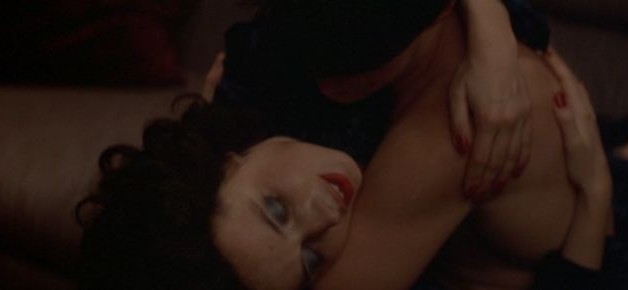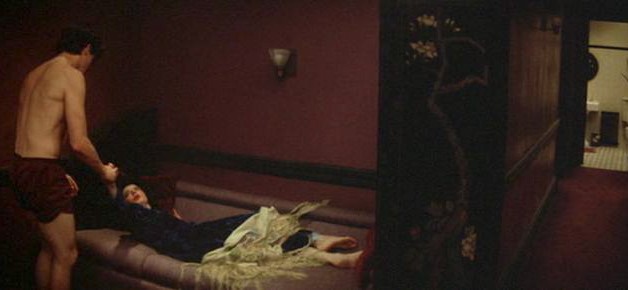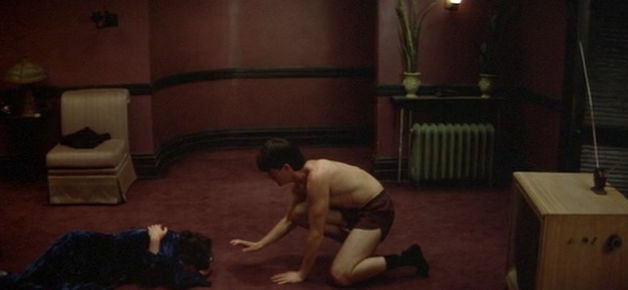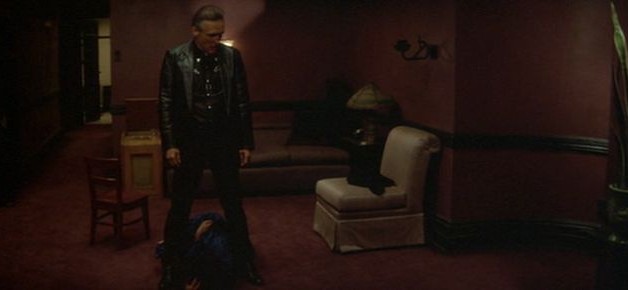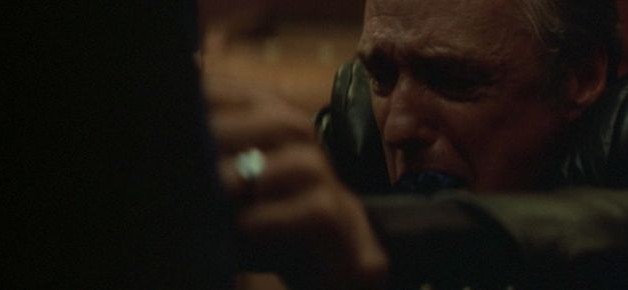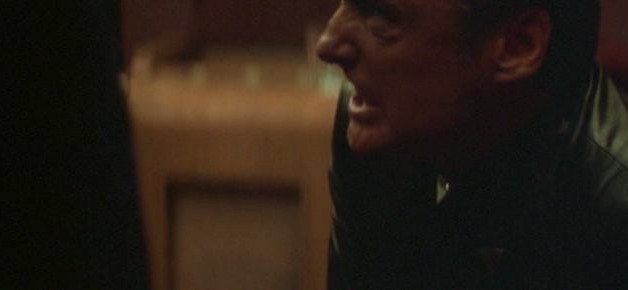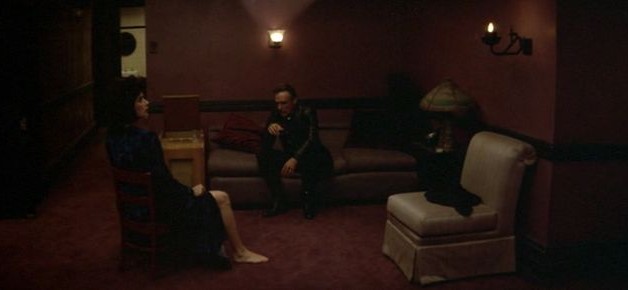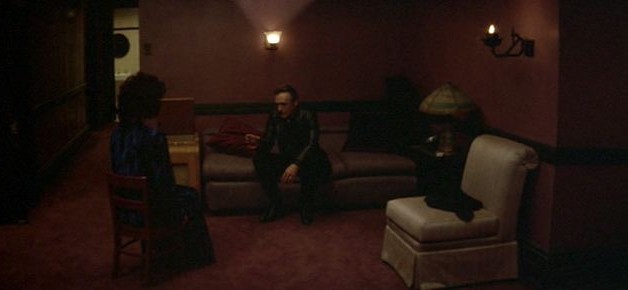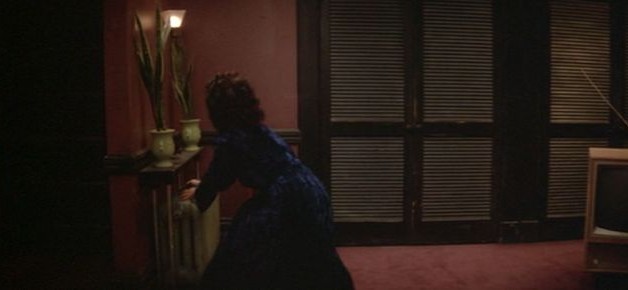The Blue Velvet Project
Blue Velvet, 47 seconds at a time by Nicholas Rombes
-
 The Blue Velvet Project, #63
The Blue Velvet Project, #63
Second #2961, 49:21 “Do you like me?” Dorothy asks. “Yes,” says Jeffrey. “Do you like the way I feel?” These are simple, almost childlike questions and answers, tender, quiet exchanges of whispered words as if to replace the previous horrors with a new hope. In John Banville’s 1997 novel The Untouchable, Victor Maskell narrates the story of his transformation into and life as a double agent for the Soviet Union during the 1930s, 40s, and 50s in England: We were latter-day Gnostics, keepers of a secret knowledge, for whom the world of appearances was only a gross manifestation of an… Read more
-
 The Blue Velvet Project, #62
The Blue Velvet Project, #62
Second #2914, 48:34 1. In the aftermath of the assault, Dorothy calls Jeffrey Don, her kidnapped husband’s name. Jeffrey tenderly corrects her. “No,” he says. She doesn’t seem to hear him: “Oh Don. Hold me.” Frank, Jeffrey, and Don, the three men circulating in Dorothy’s imagination. Don. Donny. “Little” Donny. The largely off-camera presence of the Donnys governs the logic of the film. 2. In David Mamet’s 1994 play The Cryptogram, Donny (“a woman in her late thirties”) has this exchange with Del (“a man of the same age”), in which she tells him that sometimes she wishes she was… Read more
-
 The Blue Velvet Project, #61
The Blue Velvet Project, #61
Second #2867, 47:47 For the first time since Frank’s prolonged assault on Dorothy, the camera has shifted perspective, freeing us from Jeffrey’s gaze. A new space opens up, one that has not been revealed entirely before, with the kitchen in the implied space behind the camera, and the dark, cave-like shadow of the apartment door area occupying the frame’s center. Jeffrey—still in his black socks, humanized—crawls toward Dorothy who will, when he caresses her head, jolt as if bitten by a snake. The implication is that she is still enmeshed in Frank’s world, even though he is no longer physically… Read more
-
 The Blue Velvet Project, #60
The Blue Velvet Project, #60
Second #2820, 47:00 Throughout this entire sequence, we never once see Dorothy from Frank’s point of view. In fact, the camera stays positioned entirely on Jeffrey’s side of the room, adopting, if not his precise point of view from within the closet, then at least his general angle of vision throughout. Even when we see Dorothy’s face close up, it is not from Frank’s point of view; we are never permitted to cross the invisible line that divides the room to see things from Frank’s side. On one level, this increases our identification with Jeffrey; for the most part,… Read more
-
 The Blue Velvet Project, #59
The Blue Velvet Project, #59
Second #2773, 46:13 There is a tendency, with the passage of time, to soften the edges. If Blue Velvet is remembered as notorious, it is notorious in a faintly wholesome, Frank Capra, nostalgic way. The danger of nostalgia is that it drains away the extremes, and leaves you with a comfortable—but inauthentic—middle ground. Blue Velvet earns its tender glow only because that glow has had its origins in the black evil furnace of Frank. The frame brings to mind Walton Ford’s painting Malmaison (2008), and the momentary gap it suggests between victim and prey. That gap, that space . .… Read more
-
 The Blue Velvet Project, #58
The Blue Velvet Project, #58
Second #2726, 45:26 1. The danger of the close-up, bringing the viewer ever nearer to the rage of Frank’s face. It’s almost clinical: a portrait of a madman and of an actor playing a madman. Reaching out to part Dorothy’s robe, Frank’s hand occupies nearly as much screen space as his face. And almost half the screen is in darkness, as if leaking in from some extra dimension. 2. Sergei Eisenstein, in his 1944 essay “Dickens, Griffith, and the Film Today,” wrote: We know from whence the cinema appeared first as a world-wide phenomenon. We know the inseparable link between… Read more
-
 The Blue Velvet Project, #57
The Blue Velvet Project, #57
Second #2679, 44:39 The full and furious roar of Frank. The camera has just completed a somehow menacing lateral tracking shot passing very close behind Dorothy’s back. Frank, having deeply inhaled from the mask (as if to prepare himself for the performance that he—Dennis Hopper, not Frank—is about to deliver) is now contorted with fury and sorrow. And something else: terror. Terror, perhaps, for something he has summoned. Poem #259, stanzas two and three, from The Dream Songs, by John Berryman, goes like this: When worst it got, you went away I charge you and we will wonder over this… Read more
-
 The Blue Velvet Project, #56
The Blue Velvet Project, #56
Second #56, 43:52 The implied violence before the explicit violence, as the patterns and objects of Dorothy’s apartment have settled into a merciless, strict formalism. The fact of Dorothy’s bare leg, the tenderness of her foot upon the carpeting, sets a machine in motion somewhere. In his monumental, multi-volume work Rising Up and Rising Down, William T. Vollmann explains his reasons for exploring violence in such calculus-like detail: “I wanted to find a base point beneath which we couldn’t go—the ‘floor’ of evil. I could then note that the fall would not be bottomless. I might hit it and die… Read more
-
 The Blue Velvet Project, #55
The Blue Velvet Project, #55
Second #2585, 43:05 Frank has, as they say, arrived. And he is one suave motherfucker. Bourbon in hand, he commands the room. He is Sinatra minus the musical talent. He barks at Dorothy, as if he himself was the director of Blue Velvet: he orders her to light the set and arrange the props. Then he directs her in her performance, forcing her into a brutalizing form of Method acting. For Dorothy is clearly acting for Frank, in the same was that Isabella Rosselleni is acting for Lynch, and for us. Her apartment suddenly has been transformed—with the entrance of… Read more
-
 The Blue Velvet Project, #54
The Blue Velvet Project, #54
Second #2538, 42:18 Frank has arrived, banging on the door. The fact that we anticipated his arrival makes it no less terrifying. Jeffrey—naked—has been shuttled into the closet, while Dorothy ditches the knife behind the radiator, in one of Blue Velvet’s many sly, tension-breaking references to Eraserhead. In Art and Fear, Paul Virilio reminds us that the coming of sound in film in the late 1920s effectively transformed silence into something alien, almost a special effect: Yet one crucial aspect of this mutation of the seventh art has been too long ignored and that is the arrival of the talkies.… Read more
